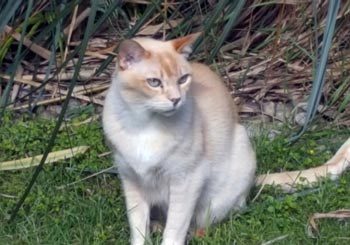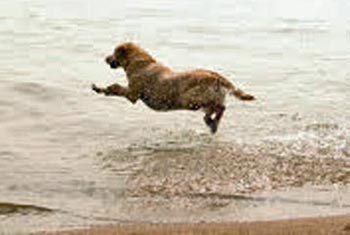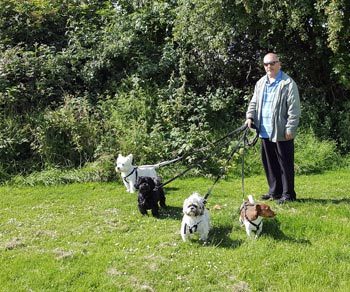4 Sept 2017
Marge Chandler discusses managing weight in companion animals, and complications with genetics, environment and diet.

Obesity affects more than half of pets in many First World countries, and is a potentially avoidable risk factor for many serious disorders. Treating obesity in pets is often unsuccessful; in one study, nearly 40% of dogs did not complete a weight programme and about half regained the lost weight (German, 2016).
The common perception is obese pets are overfed and under-exercised due to owner indulgence or ignorance. Certainly, overeating without increased activity can result in weight gain; however, this is an oversimplification of the cause of obesity. Obesity is a multifactorial disorder that includes environmental, psychological, metabolic and genetic factors, and their interactions. Our increasing knowledge about these other factors may provide additional tools for preventing and treating obesity.

Genetic factors account for 40% to 70% of the variation in the human body mass index (BMI) – a rough measure of human body fat. Genetic studies have determined several different causative mutations involving obesity loci on different chromosomes. More than 200 genes in mice and more than 100 genes in humans have been identified that affect bodyweight regulation (Srivastava et al, 2007).
A single-nucleotide polymorphism (SNP) is a DNA sequence variation on a chromosome that occurs when a single nucleotide – such as adenosine (A), thymine (T), cytosine (C) or guanine (G) – differs from others of the same species in that genetic location. There is an association of SNPs in the human “fat mass and obesity-associated” gene region with BMI and risk of obesity; for example, a genetic location associated with adiposity exists, although how this gene affects obesity is not clear. Multiple genetic processes may contribute, including those governing appetite and energy expenditure (Facett and Barroso, 2010).
An increased risk of obesity exists in some dog and cat breeds, which indicates genetics is likely a factor. Labrador retrievers, Shetland sheepdogs, golden retrievers, cocker spaniels, dachshunds, miniature schnauzers, springer spaniels, Chihuahuas, basset hounds and pugs are more likely to be obese compared to other breeds (Lusby and Kirk, 2009). Less data is available about obesity risks in cat breeds, although Orientals appear to be affected less frequently, and mixed breed and domestic shorthaired cats may be more at risk than purebred cats (Lund et al, 2005).
A deletion in the canine proopiomelanocortin gene has been found in some Labrador retrievers and flat-coated retrievers. This gene is associated with greater body fat and food motivation (Raffan et al, 2016). Three adipokine genes have also been identified as possible markers for Labrador retrievers at risk of obesity (Manowska et al, 2016).
These discoveries of the genetics in humans and dogs do not explain the increase in obesity prevalence. Genes also do not fate individuals with “obesity genes” to inevitable obesity. While DNA cannot be changed, the expression of genes and their effects can be modified – for example, exercise stimulates genes in muscles to make proteins that help metabolise energy sources more effectively. Certain food substances turn genes on or off, including some genes that affect metabolism. Having “obesity genes” may mean greater care will be needed to prevent obesity, and it may be more difficult to treat.
Highly palatable diets fed free choice promote overeating. While food type (wet versus dry) does not appear to affect the incidence of canine obesity, feeding premium dry foods has been associated with feline obesity; possibly due to free choice feeding (Colliard et al, 2009). The effect of carbohydrates versus fat in feline diets is controversial, although fat has more than twice the calories of carbohydrates so it is hard to maintain or lose weight on a high-fat diet.
Owners may not know how much to feed or may not measure food accurately. The majority (nearly 70%) of cats owners feed until their cat stops eating (free choice), with about 16% feeding according to the pet food label, and fewer than 5% having requested a recommendation from their vet (PFMA, 2009). Only 9% of people choosing to feed a raw diet were reported to have consulted with a vet (Morgan et al, 2017).
The size of the cup used to measure dry food and the feeding bowl size may affect the amount of food fed, similarly to the effect of plate size on portion sizes of human food. Owners given a large cup and bowl provided more food than the small ones used (Murphy et al, 2012).
The social setting of meals also influences eating behaviour. Many animals, especially dogs, increase their food intake when eating in the presence of other animals, which is termed social facilitation. On the other hand, being an only dog also can increase the risk of obesity, likely due to owner feeding management from the type of relationship between the owner and the only dog.
Feeding table scraps and treats may induce pets to overeat. Some adult dogs are fed up to 50% of their calories from table scraps, especially toy breeds, and many owners feed 20% to 25% of their dog’s calories as human foods (Heuberger and Wakshlag, 2011).
The pet food market shows an increase in the year-on-year growth in sales of cat and dog food treats. Dog treat sales in western Europe increased about 5% annually from 2012 to 2017, and cat treats rose even more to 8.6% increase/year (Philips-Donaldson, 2017). In one study, a majority (96%) of owners reported feeding treats to their dog (White et al, 2016).
These owners’ views about giving treats included positive reinforcement and reflected the importance of the human-animal bond.
The humanisation of pets has increased, as reflected by terms such as “pet parent” or “fur baby”. Some parents give treats and extra food to their children to gain affection and love, and it is likely the same occurs with pets, as feeding can result in positive pet-owner interactions (Pretlow and Corbee, 2016).
Pets also easily learn how to respond if they do not get the extra food expected. Intermittent rewarding is very powerful and pets may intensify their begging or other behaviours until their owner rewards them with food. Stress eating can also occur in pets, as well as people, which, along with decreased exercise, may be a factor in the increased obesity rates of indoor compared to outdoor living cats (Pretlow and Corbee, 2016).
If problems such as stress or boredom are eased by eating, this eating behaviour can become addictive.
Several studies have shown low activity is a predictor of obesity. In cats, outdoor access usually increases activity and, as noted, indoor cats are more at risk for weight gain (Figure 1).
One study found no difference in the risk of obesity between outdoor and strictly indoor cats (Colliard et al, 2009); although this study may have been hampered by low numbers and did not describe the activity levels of the cats.

Integration of an exercise programme into a controlled diet weight loss programme for overweight dogs showed a small improvement in weight loss and an improvement in preservation of lean body mass in exercised compared to non-exercised dogs (Vitger et al, 2016; Figure 2).
As the true goal is fat loss rather than weight loss, this emphasises the importance of exercise. In humans, it is becoming recognised “fit fat” individuals exist, as well as unfit fat ones, and getting sufficient exercise (such as 150 minutes/week) is a more important indicator for length of life than BMI. This has not yet been studied in dogs or cats.
Another study investigated changes in the transcriptome of key energy metabolism genes in muscle and adipose tissues in response to diet-induced weight loss alone or combined with exercise in overweight pet dogs.
Physical training and weight loss led to potentially beneficial transcriptional changes in genes involved in the glucose-transport pathway in muscle and adipose tissues (Herrera Uribe et al, 2016).
In humans, the amount of voluntary movement outside of exercise, such as fidgeting, is related to a decreased obesity risk. This tendency for voluntary movement may have a genetic basis.
This is probably seen in some nervous or active pets compared to those that will happily sleep or rest most of the day, although no studies have been performed.
Increasing feeding frequency to four meals per day increased activity in cats (de Godoy et al, 2015). Increased dietary water content increased activity in one study (Deng et al, 2014), but this was not in the study by de Godoy et al.
Both studies used 70% dietary water content compared to a dry diet, so the reason for the different results is unclear.
In some studies, the risk of pet obesity increases with lower owner income, as does the risk of human obesity rise with decreasing income. The risk of pet obesity increases with increasing owner age, although this is also not affected by the amount of exercise – for example, it appears older owners are not necessarily exercising their dogs less, but perhaps are feeding more (Courcier et al, 2010; Figure 3). An association exists between obese owners and obese dogs, but this is not true for cats (Nijland et al, 2010).
The association for obese owners and obese dogs also does appear to be affected by the amount of time the owners spend walking their dogs in that study.
Another study did show, compared with dog walkers, those who did not own or walk their dog reported less physical activity and a significantly higher BMI (Lentino et al, 2012).
Many excellent programmes are available for pet weight loss using appropriate diets and follow up.

Simply telling an owner to have the pet lose weight or to feed less is rarely effective; a more complete plan is needed. While smaller portions may be applicable in some cases, changing to a complete and balanced weight loss diet better avoids nutrient deficiencies.
A study showed while a majority of veterinary practitioners recommended reducing the portions fed to overweight pets, this can result in deficiencies in methionine, cysteine, tryptophan, eicosapentaenoic and docosahexaenoic fatty acids, selenium, and many vitamins (Gaylord and Remillard, 2017). Along with an appropriate weight loss diet, a programme that fits the individual pet and owner is vital to the approach of weight loss. Maintaining contact with the owner, such as through a weight management clinic, is also valuable.
An obesity intervention for addictive eating behaviours in children has been developed involving a staged procedure of food withdrawal. “Problem foods” (those difficult to resist) are not kept in the house and not eaten for a minimum of 10 consecutive days.
These are withdrawn one by one, then snacking stopped and, finally, a reduction in meal portion size. Trigger avoidance, such as staying out of the kitchen and not having food in sight, is combined with behavioural addiction methods such as alternative behaviours (such as walking instead of eating) and lessening of stress (Pretlow et al, 2015).
A similar approach may be helpful for pets and their owners, including avoiding triggers, playing with or walking the pet, and learning to tolerate or diffuse begging behaviour (Pretlow and Corbee, 2016).
In humans, rodents, dogs and cats the gut bacteria, other microorganisms, and their environment – collectively termed the microbiome – differs in lean versus obese individuals. The gut microbiome is influenced by the maternal microbiota, diet, environment, antibiotic use and probiotics.
The microbiota function like a metabolic “organ”, influencing nutrient acquisition and energy homeostasis and affect the controlof bodyweight.
Alterations in gut microbiota and increased intestinal permeability likely play a role in the development of the chronic low-grade inflammatory state present in obesity.
In humans, both the diversity of the microbiota and the Bacteroidetes/Firmicutes ratio are decreased in obese individuals (Compare et al, 2016). In cats, the microbiota differed between lean and obese cats, but was not linked to specific bacterial groups (Kieler et al, 2016).
In dogs, the microbiome diversity was lower in the obese individuals and, similar to humans, Firmicutes bacteria were greater in lean dogs and Proteobacteria were predominant in obese dogs (Park et al, 2015).
This “obese microbiota” seems to increase dietary energy absorption and favour weight gain and fat deposition (Compare et al, 2016), although the changes in the microbiota may also be due to a high fat or “obesogenic” diet (Kieler et al, 2016).
The gut microbiota in obese individuals do show changes enabling the microbiota to extract more energy from the diet and interact with host epithelial cells to indirectly control energy expenditure and fat storage. Another possible effect of the microbiota is to increase gut permeability, which may affect the metabolic inflammatory state seen with obesity (Kobyliak et al, 2016).
Dietary fibre types that function as prebiotics, such as enhance the growth of beneficial gut bacteria, may shift the microbiome in obese animals to one similar to that of leaner animals. Short-chain fatty acids (SCFAs), such as butyrate, acetate and propionate, are produced by the gut bacteria fermentation of dietary fibre. These SCFAs are absorbed and serve as an energy source.
They also may act in the gut to regulate energy balance and induce the release of the anorexic peptide YY, which would cause a decrease in appetite (Tilg and Adolph, 2015).
Probiotics may also have a use in modifying the gut bacteria to influence obesity. In mouse studies, some probiotics have shown an inhibition of weight gain in mice on high sugar or fat diets (Kang et al, 2013; Kondo et al, 2010).
Although, a study in cats using Enterococcus facecium SF 68 supplementation did not show any effect on food intake, weight loss or body composition (Kathrani et al, 2016). Like antibiotics, probiotics are not the same, and the types and amounts of microorganisms in them have different results in different situations.
While excessive calories definitely will cause weight gain, the tendency to gain weight and the ability to control appetite or begging in pets is driven by many causes. Genetics plays a role, as does the microbiome of the intestines. Educating owners about body condition diet and exercise is vital.
How can innovations help us? Understanding the human-animal bond and the humanisation of pets, and how these affect pet feeding behaviours, may help us give useful advice and support to owners.
As we learn more about the effects of gene expression in obesity and the gut microbiome, we will likely find the beneficial diet and exercise programmes that will affect these areas, giving us greater control in the prevention and control of obesity.